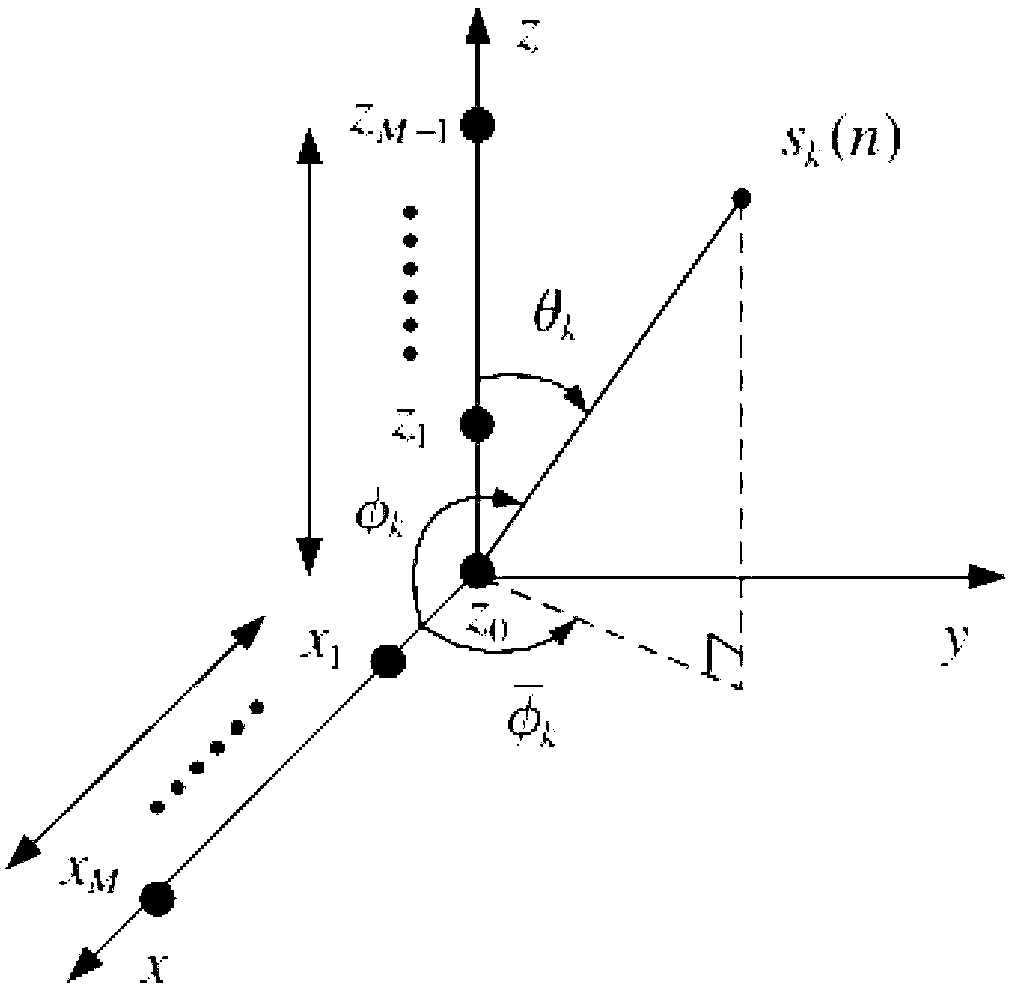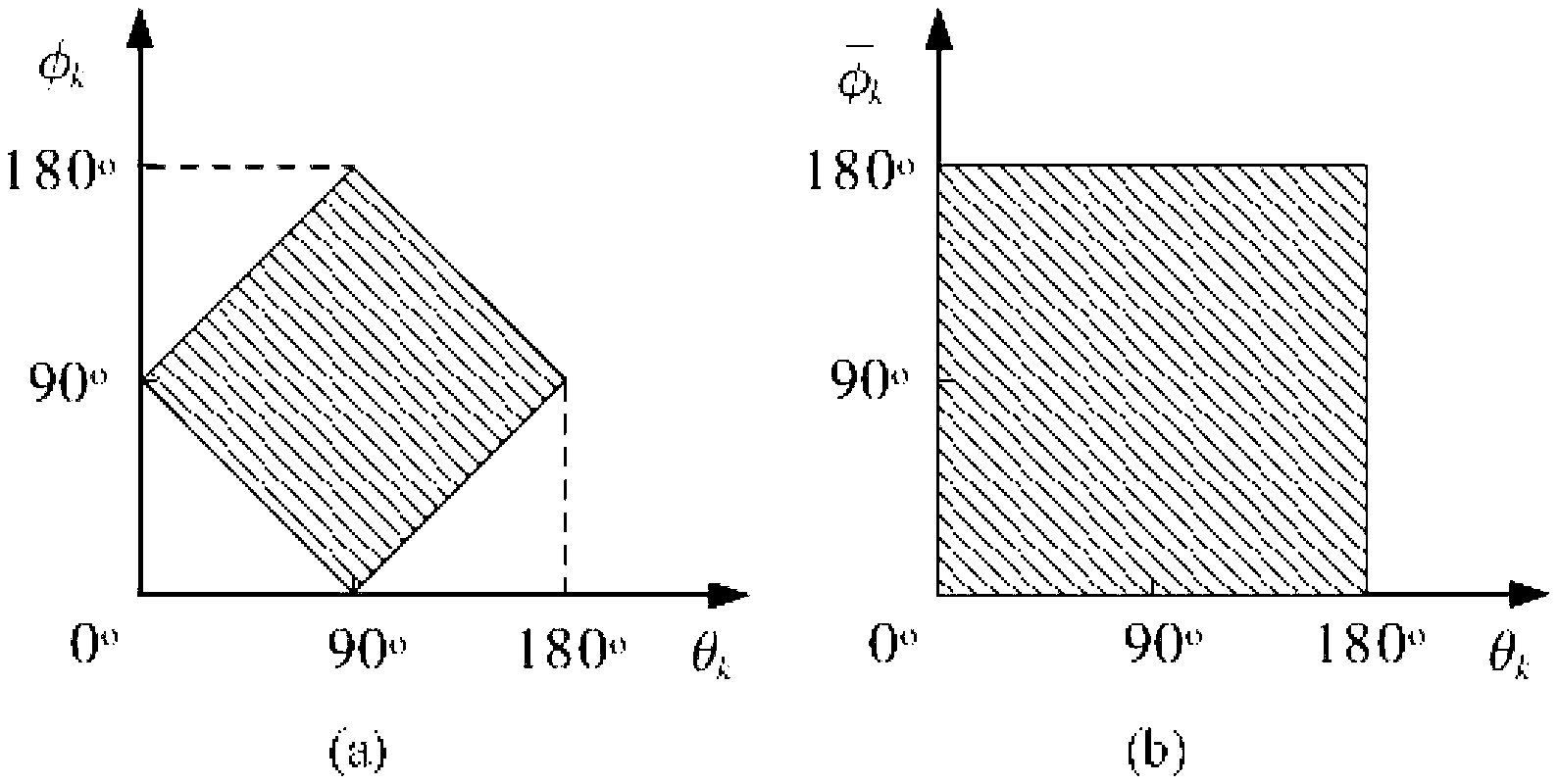Joint estimation method for azimuth angle and elevation angle of signal on basis of L-type sensor array
A sensor array and joint estimation technology, applied in the field of signal processing, can solve the problems that cannot be applied to the real-time environment, the calculation complexity of two-dimensional wave arrival is large, and the pairing results cannot be provided.
- Summary
- Abstract
- Description
- Claims
- Application Information
AI Technical Summary
Problems solved by technology
Method used
Image
Examples
Embodiment
[0067] Direction of Arrival estimation combining azimuth and elevation angles according to an embodiment of the present invention will be described in detail below.
[0068] like figure 1 As shown, the L-shaped sensor array is placed on the x-z plane and consists of two uniform linear arrays. Each uniform linear array contains M omnidirectional sensors with a spacing of d. The origin of the coordinate system is z 0 The sensor at is used as a reference for each uniform line array, z 0 and x 1 The sensor spacing is also d. Assume p incoherent far-field narrowband signals {s k (n)}, wavelength λ, from different elevation and azimuth angles {θ k ,φ k} incident on the array. like figure 1 As shown, the elevation angle θ k and azimuth φ k Measured clockwise relative to the z-axis or x-axis, azimuthal projection Measured counterclockwise with respect to the x-axis in the x-y plane. Here 0°≤θ k ≤180°, 0°≤φ k ≤180°, The signal received by two uniform linear arrays can b...
PUM
 Login to View More
Login to View More Abstract
Description
Claims
Application Information
 Login to View More
Login to View More - R&D
- Intellectual Property
- Life Sciences
- Materials
- Tech Scout
- Unparalleled Data Quality
- Higher Quality Content
- 60% Fewer Hallucinations
Browse by: Latest US Patents, China's latest patents, Technical Efficacy Thesaurus, Application Domain, Technology Topic, Popular Technical Reports.
© 2025 PatSnap. All rights reserved.Legal|Privacy policy|Modern Slavery Act Transparency Statement|Sitemap|About US| Contact US: help@patsnap.com



